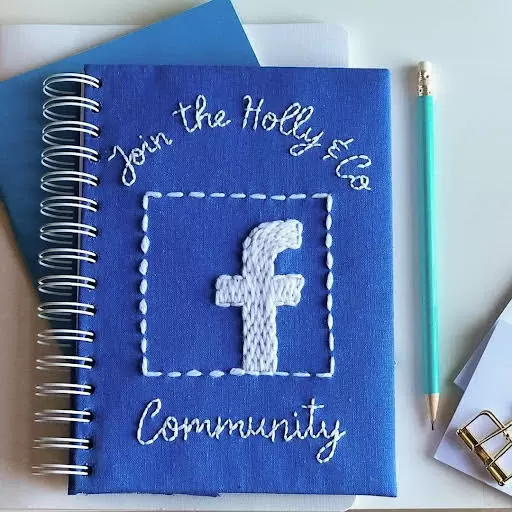

Small business marketing channels: Holly Tucker’s ultimate guide
UPDATED 28th AUGUST 2023
What are the best ways to market my small business? How do I get my small business noticed? Which marketing channels work best? Those are three questions I get asked about marketing a lot. So here’s my ultimate guide…

How to market your small business
'Marketing' or as we like to call it at Holly & Co 'amplification' is a term often shrouded in mystery, but ultimately it means telling your story in a way that connects and engages your community. I’m going to start by saying there’s no one ‘silver bullet’ to success — it’s a tool box and you need to think about which tools to use, what attracts customers' attention and the marketing channels these customers prefer, in order to achieve the most effective outcome.
There’s a saying I love and that’s to ‘focus on the focus’. There are a lot of marketing channels available to you, so before you get started, know that you do not need to do them all! Identify the marketing channels best suited to your business, your audience and that work for you. It is much better to do less of them really well, than to spread yourself so thinly across many that the impact is minimal. Let’s take a look at the channels available and the most important things to remember for each one — from your website and social media, to email and paid advertising.
What are the main marketing channels available to small businesses?
Let’s explore the marketing tools out there, then you could start by looking at competitors and seeing what works for them, or really honing in on your target audience and picking that apart to find out how and where you’ll find them. Do your research then get stuck in, bit by bit!
How to promote your small business website
Your website needs to be a brilliant representation of your brand and your product. It’s the gateway to people completing a purchase with you and their experience whilst on your site needs to build trust and not frustrate or confuse them. Put yourself in their shoes, think about what they want to know about you. You don’t need to spend outrageous amounts to do this. There are some great website builder tools that require no technical knowledge (Wix, Squarespace, etc), but you do need to know your brand inside out and map out how your website will convey it through a screen.
And don’t forget about SEO (Search Engine Optimisation — read how to improve your SEO ranking). This is a cost-effective way of helping customers find you when they search on Google. There are many elements to SEO, but a good start is to think about what phrases or terms people use when searching that you want to appear against, then include them in your titles and descriptions. Keep it relevant and helpful to the user, don’t just shoehorn in keywords. Google favours sites with a good user experience. Do some research and remember it takes a while to build ranking, so be patient and stick with it. You want to actively drive people to your website. If you don’t it’s like organising a party, setting up the venue but forgetting to invite any guests!
'Marketing' or as we like to call it at Holly & Co 'amplification' is a term often shrouded in mystery, but ultimately it means telling your story in a way that connects and engages your community.
How to use social media to attract customers
Organic social media (everything you can do without spending any money) is the most powerful amplification tool any business can have. The ‘big six’ social media platforms are Instagram, Facebook, Pinterest, YouTube, TikTok and Twitter, but as I said earlier it’s better to do less, and do them well, than to try and do them all. Each platform offers different things. Learn what is best delivered where and don’t just replicate your content across all platforms. As you build followers, be sure to actually engage with them and learn what performs best — types of content, formats of content, times of posting, captions and so on. And you need to clearly understand what you’re trying to achieve with your content, so you can evaluate what is and isn’t working for you.
The key word here is in the title — it’s called social media! Remember good old fashioned word of mouth? Well this is like that, on mass. You want to encourage conversations and connection, between your brand (you) and your followers, and between your followers themselves. Don’t get hung up on likes and numbers, the true value is in building an authentic, engaged, loyal community.
The business benefits of influencer marketing
Influencer marketing sort of straddles the gap between organic and paid social in that you will pay for the coverage (either through product or fees) but the end goal is for them to produce organic looking content. Working with influencers can help you reach new audiences by tapping into their followers. However it’s vital to choose people who are aligned with your brand, products and values as they will represent you. Also, some customers are starting to see influencers as being inauthentic as we know they are being paid to say they like something so be aware of that too.

There are a lot of ‘marketing’ channels available to you, so before you get started know that you do not need to do them all! Identify the channels best suited to your business, your audience and that work for you. It is much better to do less of them really well, than to spread yourself so thinly across many that the impact is minimal.

The business benefits of partnerships and collaborations
Think about looking for complementary brands or shops you could partner with to promote each other’s products. As with the influencers, it’s important for both sides that you have the same values and a similar audience, both in people and size, so it’s a fair exchange. This is a great way to connect with other small businesses and grow your community — which is top business advice.
Email marketing: how do I get more customers through email?
Email marketing — think newsletters, welcome journeys, campaign communications, automated messages and so on — pre-dates most of the other channels, and it’s not an easy one to get right. However when you do, it pays off massively. It’s key to remember that people’s inboxes are overwhelmed, just think of how many marketing emails you receive a day, so you need to really consider how your emails are going to cut through the noise. Your subject line and preview text need to be intriguing and represent what they will find inside if they open up, and your call to actions (CTAs) within the email should be clear and easy to follow. Make sure you say something interesting and different (and read our article on how to grow your email subscribers if that helps).
Building a subscriber list can take time, so be patient and make sure you’re really thinking about what you plan to deliver and why people might want to receive it. This should be communicated clearly in your sign up messaging so your subscribers really feel as though they’re receiving what you promised when they handed over their valuable email address! It’s important to store any customer data correctly too (just Google GDPR and you’ll find the rules around it).
What is paid search and how do you use it?
These are two great ways to reach more people with your content. Paid ads can be run with as little as a few pounds per day and can be set up simply through the app (on IG) or in more specific targeting detail using Facebook ad manager. You can also run ads on Pinterest, YouTube and TikTok directly through their platforms. Depending on what you want to achieve and how much you want to spend, you can achieve great low cost results using ads, but you do need to do a bit of research before you get started and make sure that you don’t become reliant on it. It can become a drug that’s hard to come off.
How to market to customers using paid advertising
Then Pay Per Click (or paid search) can also help you reach new people. These are the ads that come up at the top of search results and you pay by number of clicks. The difference is just the amount you pay for each click and that depends on the search term. So think which search terms you’d like your brand or products to appear against, type them into Google and see if anyone else is paying to appear against them (it will say ‘ad’ next to the listing if they are). Large brands cost a lot to bid against, so try to refine your search terms and come up with something with less competition. Essentially you’re looking for the sweet spot between the terms that everyone is bidding on because they are so broad, and the terms that are so niche that there aren’t many searches (and often not worth the effort).
The most important thing with any of these options is to put yourself in the shoes of your customer. Make sure you’re creating communications they would expect from your brand, with clear, engaging call to actions. And that’s it.
Small business marketing channels: key takeaways…
At a basic level, you need a website and you need a way to talk to and connect with your community (aka customers). Once you’ve decided which channels you want to try first and have thought about the customer experience, the next step is to try it and see. And when you find your groove with one, you can think about adding another to compliment what you already have.
1. Test and monitor your campaigns and website:
Measure everything. Make sure you give anything you try a fair period to test it — doing something once will not give you any useful information!
2. Take action from your web data and Google analytics:
Learn from the results by looking at your analytics for every channel regularly to see how your customers are responding to what you put out. If one thing doesn’t work, learn from it and move on to test something else.
3. Only test one difference at a time:
Don’t test too many things at once, as you won’t know which worked and which didn’t. Good luck!


Images: ‘Listen Up’ badge — by The Old English Company, ‘Instagram Feed’ bottles — by Vinegar & Brown Paper.
Related content
MORE ARTICLES ON MARKETING & PR


How to go live on Instagram or TikTok: advice from a Sky News reporter

How to make your business stand out (and shock people into remembering your brand)

What attracts customers’ attention? Ask Real Hackney Dave…

